UAE power sector shapes up ahead of Cop28
3 April 2023
 This package on the UAE's power sector also includes:
This package on the UAE's power sector also includes:
> Ewec rules out solar in desalination projects
> Dewa receives K station bid
> Dewa briefs 1.8GW solar bidders
> Italian firms pursue energy transition roles
> Majid al-Futtaim signs 36MW clean energy agreement
> Abu Dhabi eyes power and water contracts extension
There will be no shortage of milestones once November’s Cop28 turns the spotlight onto the UAE’s power generation sector.
Already, Abu Dhabi-based Emirates Water & Electricity Company (Ewec) has announced that, on 10 February at 2.26 pm, it met 80 per cent of total power demand using renewable and clean energy from its solar and nuclear power plants – supplying roughly 6.2GW of its total 7.7GW system power demand.
Before this, Bruce Smith, Ewec’s executive director for strategy and planning, told MEED that the company was working towards implementing control systems to enable clean and renewable energy to meet up to 100 per cent of power demand “under specific parameters or conditions”.
As things stand, Ewec is set to become the first offtaker in the region to build a utility-scale battery energy storage system (BESS), a key tool to address the intermittency of solar energy production. The company sought advisers for the development of its first two BESS facilities earlier this year.
The two projects will have a minimum capacity of 300MW plus one-hour of reserve-optimised BESS. The facilities are expected to come on-stream by 2026.
From being nearly wholly dependent on thermal power generation as recently as four years ago, these developments offer compelling evidence of the UAE’s commitment to its energy diversification strategy
Higher peak demand not only requires additional thermal and solar generation capacity, but also batteries to enhance system reliability, Ewec noted in a presentation in March.
Based on its latest statement of future capacity requirements, Ewec foresees a 30 per cent peak demand increase from 16.7GW in 2022 to 21.6GW by 2029.
This year’s commissioning of a new power plant in Sharjah – the 1,800MW Hamriyah independent power producer (IPP) – is expected to reduce Ewec’s electricity exports. However, this will be offset by the addition of offshore demand starting in 2026 from Abu Dhabi National Oil Company (Adnoc).
In spite of rising demand warranting expansion in installed generation capacity – and with substantial contracted thermal capacity approaching expiry – Ewec forecasts halving its total carbon dioxide (CO2) emissions from 43 million tonnes a year (t/y) in 2019 to 22 million t/y by 2035.
Ewec needs to install 7.3GW of solar capacity by 2029 and 16GW by 2036, which implies procuring roughly 1GW to 1.5GW of new capacity annually during the period.
By the end of 2023, Ewec’s solar fleet will comprise the 935MW Noor Abu Dhabi project in Sweihan and the 1.5GW Al-Dhafra solar photovoltaic (PV) plant, which is nearing completion.
The procurement process is under way for the emirate’s third utility-scale solar PV IPP, also with a capacity of 1.5GW, in Al-Ajban.
Tendering for a fourth solar PV project, likely to be located in A-Ain, is also expected to begin in the third or fourth quarter of 2023.
This ambitious programme, including an aspiration to enable Ewec’s solar fleets to produce dispatchable loads similar to conventional power plants, makes the BESS projects of paramount importance.
Dubai green story
Dubai’s long-term capacity procurement plan is less clear, although state utility Dubai Electricity & Water Authority (Dewa) has reported a 5.5 per cent increase in demand in the emirate in 2022, to reach 53,180 gigawatt-hours (GWh).
This is half of the 10 per cent growth in 2021, which marked the emirate’s resurgence from the Covid-19 pandemic.
As of early 2023, over 2GW of clean energy from the Mohammed bin Rashid solar park accounted for 14 per cent of Dewa’s electricity production capacity, which stood at 14.5GW.
Based on the initial plan of 5GW of capacity once the solar park is complete, and with some 1GW still under construction, Dewa is expected to procure at least 2GW more.
The 1.8GW sixth phase of the solar park, which is currently being tendered, accounts for most of the outstanding capacity.
Unlike Abu Dhabi, which plans to expand its thermal generation capacity in light of the demand increase and expansion of intermittent renewable energy, Dubai has already ruled out gas as a feedstock for future greenfield generation capacity.
“We have a relatively new and modern fleet [of thermal power generation plants] that would be operational for another 20 to 30 years,” Saeed Mohammed al-Tayer, Dewa CEO and managing director, said in a forum in Dubai in 2020.
The Dubai Economic Agenda 2033 (D33), which aims to double the size of Dubai’s economy over the next decade and consolidate its position among the top three global cities, is expected to drive power and water demand within the emirate, without compromising its carbon abatement strategy and emissions reduction targets.
Diversification
The UAE already has the GCC’s most diversified electricity production installed capacity, with fleets deriving electricity from solar PV, thermal and nuclear power plants. The region’s first hydroelectric power plant in Hatta in Dubai will further expand the country’s power sources.
The completion of the 1.5GW Al-Dhafra solar IPP in Abu Dhabi and roughly 1GW from the fourth and fifth phases of the MBR solar park in Dubai will drive solar’s share from 8 per cent at the start of the year to 12 per cent by the end 2023. This will cause the overall share of thermal power generation to retreat by three percentage points to 79 per cent, in spite of the completion of the remaining units at Hassyan in Dubai, the Hamriyah IPP in Sharjah and the Fujairah F3 facility.
The three reactors at the Barakah nuclear power plant in Abu Dhabi also contribute an estimated 4.2GW of installed capacity, or roughly 9 per cent of Abu Dhabi, Dubai and Sharjah’s combined overall capacity, and 18 per cent in Abu Dhabi alone.
From being nearly wholly dependent on thermal power generation as recently as four years ago, these developments offer compelling evidence of the UAE’s commitment to its energy diversification strategy.

Exclusive from Meed
-
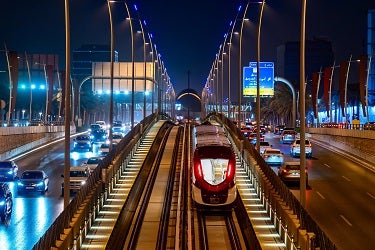
-
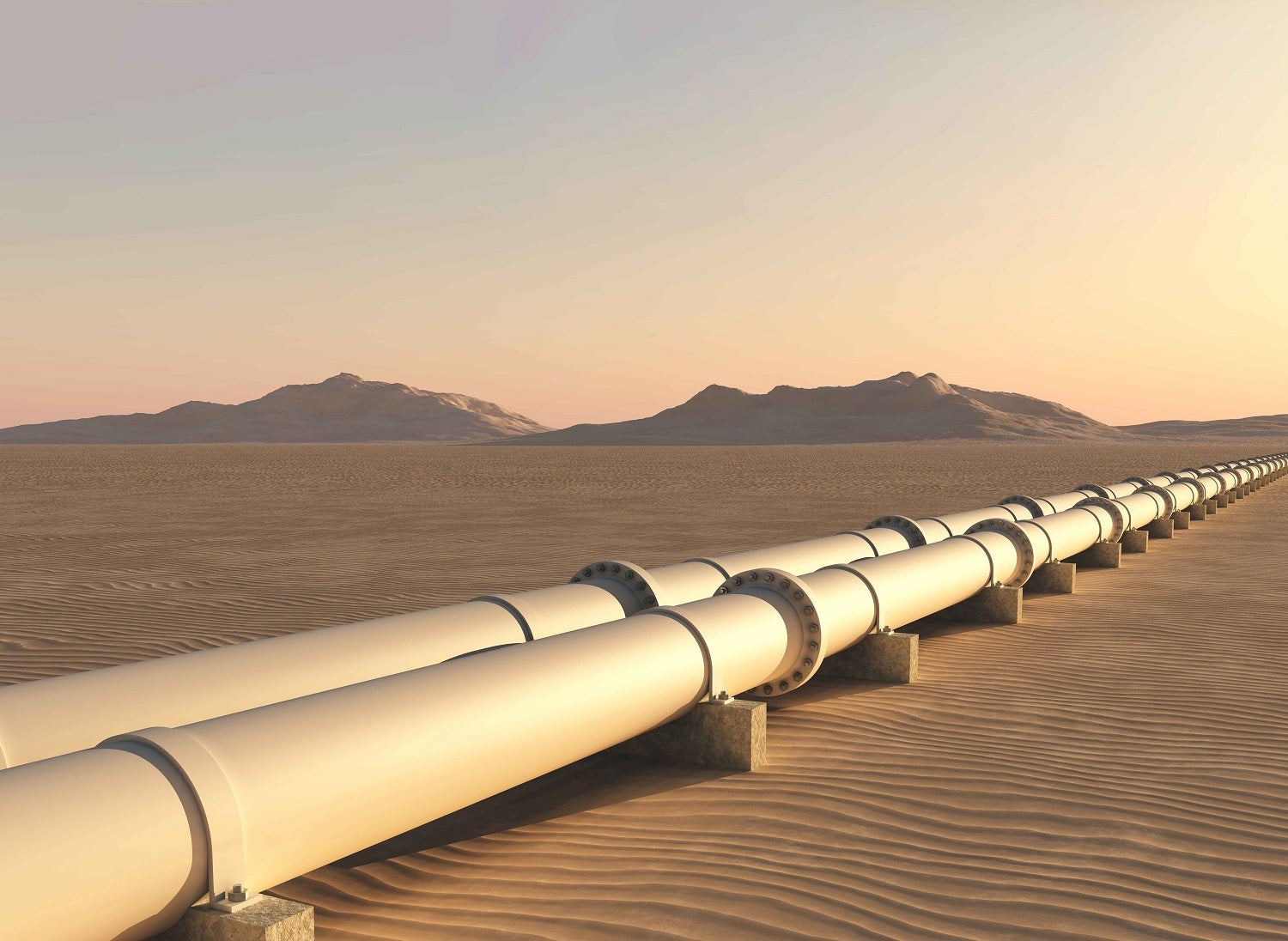
-
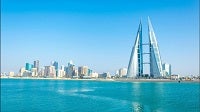 Bahrain and US sign nuclear energy agreement
Bahrain and US sign nuclear energy agreement17 July 2025
-
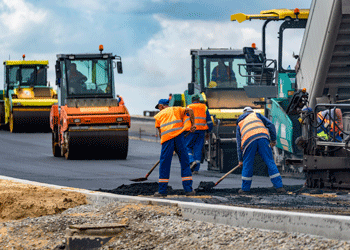 Kuwaiti firm wins $53m Duqm coastal road contract
Kuwaiti firm wins $53m Duqm coastal road contract17 July 2025
-
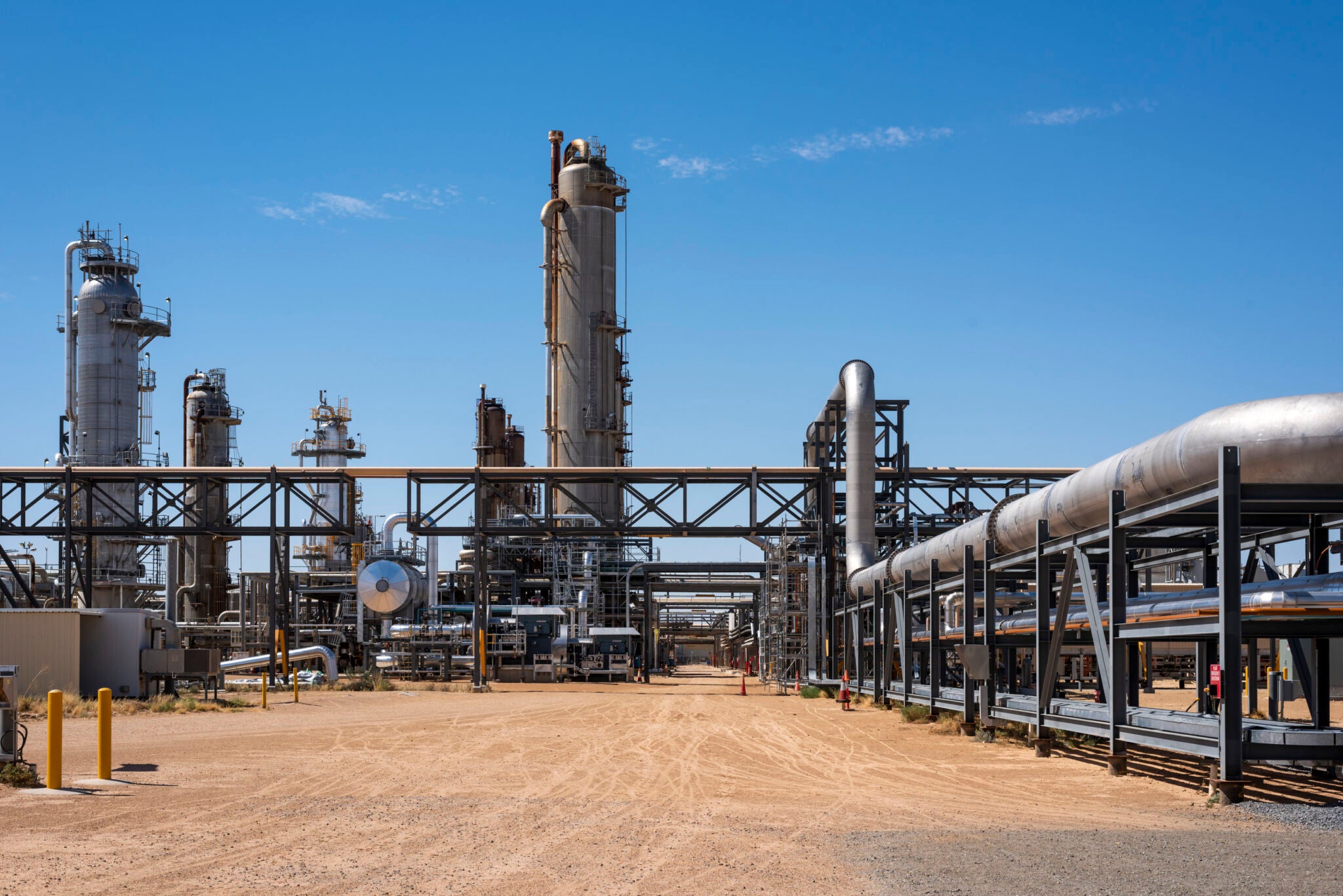
All of this is only 1% of what MEED.com has to offer
Subscribe now and unlock all the 153,671 articles on MEED.com
- All the latest news, data, and market intelligence across MENA at your fingerprints
- First-hand updates and inside information on projects, clients and competitors that matter to you
- 20 years' archive of information, data, and news for you to access at your convenience
- Strategize to succeed and minimise risks with timely analysis of current and future market trends

Related Articles
-
 Riyadh Royal Commission awards metro Line 2 extension
Riyadh Royal Commission awards metro Line 2 extension18 July 2025

Register for MEED’s 14-day trial access
Saudi Arabia’s Royal Commission for Riyadh City (RCRC) has awarded an estimated $800m-$900m contract to build the next phase of the Riyadh Metro project, which is the Line 2 extension.
The contract was awarded to the Arriyadh New Mobility Consortium.
The Line 2 extension is 8.4 kilometres (km) long, of which 1.3km is elevated and 7.1km is underground. It includes five stations – two elevated and three underground.
It will run from where Line 2 currently ends at King Saud University (KSU) and then travel onwards to new stations at KSU Medical City, KSU West, Diriyah East, Diriyah Central, where it interchanges with the planned Line 7, and then finally to Diriyah South.
According to the consortium’s official website, the consortium members include Italy’s Webuild, India’s Larsen & Toubro, locally based Nesma & Partners, Japan’s Hitachi, Italy’s Ansaldo STS, the Canadian firm Bombardier, Spain’s Idom and WorleyParsons from Australia.
In 2013, the Arriyadh New Mobility Consortium secured Riyadh Metro’s Line 3 project for $5.21bn.
Line 3, also known as the Orange Line, stretches from east to west, from Jeddah Road to the Second Eastern Ring Road, covering a total distance of 41km.
Riyadh Metro
Riyadh Metro’s first phase features six lines with 84 stations.
The RCRC completed the phased rollout of the Riyadh Metro network when it started operating the Orange Line on 5 January.
In December last year, the RCRC started operating the Red Line and Green Line.
The Red Line, also known as Line 2, stretches 25.1km from the east of Riyadh to the west, via King Abdullah Road, connecting King Fahd Sports City and King Saud University. It has a total of 15 stations.
The Green Line, also known as Line 5, extends 13.3km from King Abdullah Road to the National Museum. With 12 stations, it serves several ministries and government agencies, including the Defence Ministry, the Finance Ministry and the Commerce Ministry, as well as other areas.
Earlier in December, the RCRC started operating the Blue Line (Line 1), Yellow Line (Line 4) and Purple Line (Line 6).
The Blue Line connects Olaya Street to Batha; the Yellow Line runs along King Khalid International Airport Road; while the Purple Line connects Abdul Rahman Bin Awf Road with Al-Sheikh Hassan Bin Hussain Road.
King Salman Bin Abdulaziz Al-Saud inaugurated the Riyadh Metro on 27 November last year.
The network spans 176km. Four of the stations have been designed by signature architects.
The metro is part of the Riyadh Public Transport Project, which encompasses metro and bus systems. The project aims to relieve traffic congestion.
The $23bn project was scheduled to open in 2018, but construction activity slowed due to disputes over prolongation and the disruption caused by the Covid-19 pandemic.
The RCRC awarded the main construction packages for the scheme on 28 July 2013.
In November 2022, the RCRC struck a deal with three contracting consortiums working on the Riyadh Metro scheme regarding the completion of the project’s remaining works.
The Fast consortium won lines 4, 5 and 6, reportedly valued at $7.82bn. The Bacs consortium was awarded lines 1 and 2 for $9.45bn, while Arriyadh New Mobility secured Line 3 for $5.21bn.
US firm Bechtel leads the Bacs consortium. Italian firm Ansaldo STS is the leader of the Arriyadh New Mobility group, and Spanish firm FCC Construccion heads the Fast consortium.
AtkinsRealis has delivered programme management and supervision services for the operations and maintenance of the Riyadh Metro scheme.
https://image.digitalinsightresearch.in/uploads/NewsArticle/14289337/main.jpg -
 Firms submit bids for Maaden gold project water pipeline
Firms submit bids for Maaden gold project water pipeline17 July 2025

Saudi Arabian Mining Company (Maaden) has received proposals from local firms for a water pipeline network it plans to build as part of a larger project to develop a new gold mining and processing facility in the Al-Rjum region of the kingdom.
The Al-Rjum gold mining and processing facility, located in Medina province, is expected to be commissioned by the end of 2027. It will become the largest gold mining operation in Saudi Arabia when operational.
According to sources, the pipeline is to be developed using a build-own-operate-transfer (BOOT) model. The engineering, procurement and construction (EPC) works will have a duration of 38 months, followed by a 20-year operations and maintenance period.
Lamar Holding and Alkhorayef are understood to be the only bidders for the proposed Taif to Al-Rjum water pipeline, which forms package B of the Maaden gold mining project.
The two contractors submitted bids for the water pipeline project on 1 July, sources told MEED.
The main scope of work involves building a 150-kilometre pipeline that will supply treated sewage effluent water to the Al-Rjum gold mining facility.
ALSO READ: Saudi Arabia issues mining exploration licences
The Al-Rjum gold mining and processing facility will have an output capacity of 250,000 ounces of gold a year. The project will increase Maaden’s total gold production to 700,000 ounces a year by 2028, helping the company support Saudi Arabia’s overall goal of doubling gold production by 2030 and achieving a four-fold increase in output by 2040.
MEED recently reported that Maaden had received bids for a tender to develop accommodation facilities for over 4,500 of its workers at the upcoming Al-Rjum gold mining and processing facility.
Bids for the Al-Rjum worker accommodation tender, which is also under the BOOT model, were submitted in late June. The operations and maintenance period for this contract is 15 years.
ALSO READ: Saudi Arabia and Oman open up their minerals potential
https://image.digitalinsightresearch.in/uploads/NewsArticle/14284263/main3503.jpg -
 Bahrain and US sign nuclear energy agreement
Bahrain and US sign nuclear energy agreement17 July 2025
Bahrain and the US have signed a cooperation agreement covering the field of peaceful nuclear energy.
The agreement aims to enhance collaboration in nuclear energy, recognising its vital role in sustainable development and energy security. It aligns with Bahrain's ambitious goal of achieving carbon neutrality by 2060 and contributes to global efforts to combat climate change.
As Bahrain explores alternative energy sources, senior officials have previously indicated to MEED that they are closely monitoring developments in small modular reactor (SMR) technology. This is particularly crucial for Bahrain, where limited land availability poses challenges for solar energy projects. Floating solar plants have been identified as a potential solution, but the exploration of nuclear energy and SMRs remains a priority for future energy diversification.
The agreement was signed during an official visit to the US by Prince Salman Bin Hamad Al-Khalifa, the crown prince and prime minister of Bahrain.
The agreement was formalised by Abdullatif Bin Rashid Al-Zayani, Bahrain’s minister of foreign affairs, and Marco Rubio, the US secretary of state.
Al-Zayani added that the agreement builds upon the Comprehensive Security Integration and Prosperity Agreement (C-SIPA) signed in 2023. The agreement aims to strengthen cooperation in defence, security, emerging technologies, trade and investment.
 READ THE JULY 2025 MEED BUSINESS REVIEW – click here to view PDF
READ THE JULY 2025 MEED BUSINESS REVIEW – click here to view PDFUAE and Turkiye expand business links; Renewed hope lies on the horizon for trouble-beset Levant region; Gulf real estate momentum continues even as concerns emerge
Distributed to senior decision-makers in the region and around the world, the July 2025 edition of MEED Business Review includes:
> AGENDA: UAE-Turkiye trade gains momentum> INTERVIEW 1: Building on UAE-Turkiye trade> INTERVIEW 2: Turkiye's Kalyon goes global> INTERVIEW 3: Strengthening UAE-Turkiye financial links> INTERVIEW 4: Turkish Airlines plans further growth> CURRENT AFFAIRS: Middle East tensions could reduce gas investments> GCC REAL ESTATE: Gulf real estate faces a more nuanced reality> PROJECTS MARKET: GCC projects market collapses> INTERVIEW 5: Hassan Allam eyes role in Saudi Arabia’s transformation> INTERVIEW 6: Aseer region seeks new investments for Saudi Arabia> LEADERSHIP: Nuclear power makes a global comeback> LEVANT MARKET FOCUS: Levant states wrestle regional pressures> GULF PROJECTS INDEX: Gulf projects index continues climb> CONTRACT AWARDS: Mena contract award activity remains subdued> ECONOMIC DATA: Data drives regional projects> OPINION: A farcical tragedy that no one can endTo see previous issues of MEED Business Review, please click herehttps://image.digitalinsightresearch.in/uploads/NewsArticle/14281751/main.jpeg -
 Kuwaiti firm wins $53m Duqm coastal road contract
Kuwaiti firm wins $53m Duqm coastal road contract17 July 2025
Kuwaiti contractor Combined Group Contracting Company (CGCC) has won a RO20.6m ($53m) contract to construct coastal roads in Duqm.The scope of work covers the construction of roads with a total length of 14 kilometres, including a coastal road, a proposed service road, an extension to an existing service road, a resort street, four roundabouts, future extensions and proposed links.
The contract duration is two years from the start date of construction.
MEED reported in August 2023 that CGCC had emerged as the lowest bidder for the project.
GlobalData estimates that the construction industry in Oman will grow by 3.6% in real terms in 2025, supported by rising foreign direct investment (FDI) in the country, particularly in the manufacturing sector, as well as investment in the energy and transport sectors.
The infrastructure construction sector is estimated to grow by 5.7% in 2025, before recording an annual average growth of 5.2% between 2026 and 2029, supported by the government’s investment in upgrading road and airport infrastructure.
CGCC’s contract win in Oman comes shortly after a key contract win in the UAE, worth AED685m ($186m).
The scope of work under this contract encompasses the upgrade works on Emirates Road, from the Al-Badea intersection in Sharjah to the E55 intersection in Dubai.
The UAE’s Ministry of Energy & Infrastructure is the project client.
The contract duration is 25 months.
 READ THE JULY 2025 MEED BUSINESS REVIEW – click here to view PDF
READ THE JULY 2025 MEED BUSINESS REVIEW – click here to view PDFUAE and Turkiye expand business links; Renewed hope lies on the horizon for trouble-beset Levant region; Gulf real estate momentum continues even as concerns emerge
Distributed to senior decision-makers in the region and around the world, the July 2025 edition of MEED Business Review includes:
> AGENDA: UAE-Turkiye trade gains momentum> INTERVIEW 1: Building on UAE-Turkiye trade> INTERVIEW 2: Turkiye's Kalyon goes global> INTERVIEW 3: Strengthening UAE-Turkiye financial links> INTERVIEW 4: Turkish Airlines plans further growth> CURRENT AFFAIRS: Middle East tensions could reduce gas investments> GCC REAL ESTATE: Gulf real estate faces a more nuanced reality> PROJECTS MARKET: GCC projects market collapses> INTERVIEW 5: Hassan Allam eyes role in Saudi Arabia’s transformation> INTERVIEW 6: Aseer region seeks new investments for Saudi Arabia> LEADERSHIP: Nuclear power makes a global comeback> LEVANT MARKET FOCUS: Levant states wrestle regional pressures> GULF PROJECTS INDEX: Gulf projects index continues climb> CONTRACT AWARDS: Mena contract award activity remains subdued> ECONOMIC DATA: Data drives regional projects> OPINION: A farcical tragedy that no one can endTo see previous issues of MEED Business Review, please click herehttps://image.digitalinsightresearch.in/uploads/NewsArticle/14281451/main.gif -
 Algeria awards $855m contract for gas production project
Algeria awards $855m contract for gas production project17 July 2025
Register for MEED’s 14-day trial access
Algeria’s national oil and gas company Sonatrach has awarded an $855m contract to China’s Jereh Group for a project to develop facilities at the Rhourde Nouss gas field.
Jereh Group said that its subsidiary Jereh Oil & Gas Engineering will build a natural gas booster station in the Rhourde Nouss gas field and upgrade and renovate related transmission pipelines.
The Yantai-based company cited a letter of award from Sonatrach and said that the contract will boost the company's footprint in North Africa’s oil and gas engineering service sector.
The Rhourde Nouss boosting project will centralise the boosting of natural gas produced by the gas field and the adjacent Gassi Touil gas field, to improve their production efficiency and natural gas processing capacity, the company said.
Sonatrach, the largest gas producing company in Africa and the largest state-owned enterprise in Algeria, will pay $629.1m and $226m for the construction of the project, Jereh said.
Jereh's growing footprint
Jereh has been expanding overseas in recent years and has won contracts with major Middle Eastern oil and gas clients, including Saudi Aramco, Abu Dhabi National Oil Company (Adnoc) and Kuwait Petroleum Corporation.
In June 2021, the company was awarded a contract for the design, procurement and construction of a gas debottlenecking project in Algeria.
The project was located in the Bir Rebaa Nord and Rhourde Ouled Djemma fields, which are located in the eastern Algerian desert, about 300 kilometres southeast of Hessi Messaoud.
The client on that project was Groupement Sonatrach Eni, a joint venture of Sonatrach and Italian energy company Eni.
 READ THE JULY 2025 MEED BUSINESS REVIEW – click here to view PDF
READ THE JULY 2025 MEED BUSINESS REVIEW – click here to view PDFUAE and Turkiye expand business links; Renewed hope lies on the horizon for trouble-beset Levant region; Gulf real estate momentum continues even as concerns emerge
Distributed to senior decision-makers in the region and around the world, the July 2025 edition of MEED Business Review includes:
> AGENDA: UAE-Turkiye trade gains momentum> INTERVIEW 1: Building on UAE-Turkiye trade> INTERVIEW 2: Turkiye's Kalyon goes global> INTERVIEW 3: Strengthening UAE-Turkiye financial links> INTERVIEW 4: Turkish Airlines plans further growth> CURRENT AFFAIRS: Middle East tensions could reduce gas investments> GCC REAL ESTATE: Gulf real estate faces a more nuanced reality> PROJECTS MARKET: GCC projects market collapses> INTERVIEW 5: Hassan Allam eyes role in Saudi Arabia’s transformation> INTERVIEW 6: Aseer region seeks new investments for Saudi Arabia> LEADERSHIP: Nuclear power makes a global comeback> LEVANT MARKET FOCUS: Levant states wrestle regional pressures> GULF PROJECTS INDEX: Gulf projects index continues climb> CONTRACT AWARDS: Mena contract award activity remains subdued> ECONOMIC DATA: Data drives regional projects> OPINION: A farcical tragedy that no one can endTo see previous issues of MEED Business Review, please click herehttps://image.digitalinsightresearch.in/uploads/NewsArticle/14278458/main.jpg

